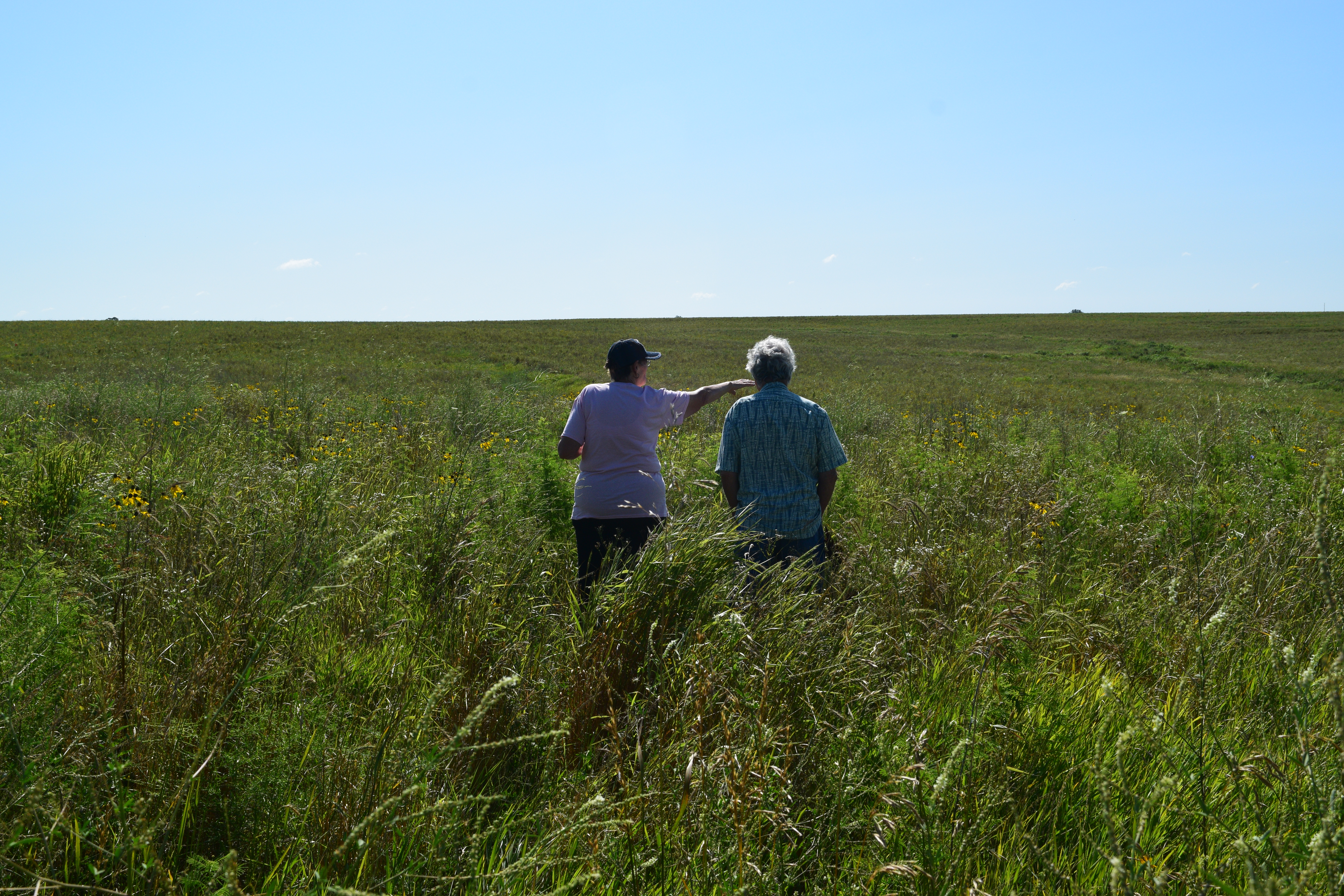Last summer, we visited with landowners who are making a difference for Monarch butterflies and other pollinators by planting prairie, including Phyllis Kimball. These landowners have made a commitment to help bring the Monarch butterfly back and support pollinators and other wildlife by planting prairie. We hope their stories will inspire you and give you some ideas about how you could also help save the Monarch and honor Iowa's prairie heritage.
Phyllis Kimball, of Creston, enrolled 160 acres in CRP pollinator mix in Ringgold County. Kimball had been away from the farm for more than two decades but returned to manage the day to day operations after an agreement with a local farmer was voided. What she found upon returning was failing terraces and trees that had taken over the valley. She stopped on the gravel road and cried at seeing what had happened to her land.
Over the next five years, Kimball would sink $100,000 toward clearing trees and fixing the terraces so it could be farmed again and right before the 2015 planting season, she lost her tenant.
Kimball’s longtime neighbor in Creston suggested she go to the local NRCS office to inquire about CRP. She was hesitant – didn’t CRP mean weeds and brush? Reluctantly she went and after the meeting, her NRCS contact called Helga Offenburger, with the Iowa Department of Natural Resources. The parcel would be a good fit for the Iowa Habitat and Access Program, he said, and the program had money to enroll her 160 acres and it could coordinate the whole project.
Reconstructed prairies feature a variety of native Iowa prairie flowers that benefit pollinators in general and various milkweed species that benefit monarchs in particular. The Eastern monarch population has declined by more than 80 percent over the past 20 years primarily due to habitat loss, including reduced milkweed required for reproduction and fewer nectar plants.
Reconstructed prairies feature a variety of native Iowa prairie flowers that benefit pollinators in general and various milkweed species that benefit monarchs in particular. The Eastern monarch population has declined by more than 80 percent over the past 20 years primarily due to habitat loss, including reduced milkweed required for reproduction and fewer nectar plants.
Across Iowa, private landowners who are establishing prairies are helping the monarch by getting more pollinator habitat on the ground to provide fuel, and milkweeds to grow more monarchs.
Converting to prairie takes time. The first year or two, Kimball made a few calls to Offenburger and they’d meet at the field for a thistle pulling therapy session. “Helga just kept reassuring me,” she said. “This has been such an educational experience to see this thing happen.”
Now in year four, the prairie is established. Kimball drives an hour just so she can set out on a lawn chair to listen to the birds and watch the sky fill with butterflies. That’s a change from when it was farmed, she said.
“I’m totally, totally pleased with what has been done. I highly recommend it to anyone considering it. I’m 100 percent pleased with the program,” she said. “When you have something like this and can see this, it’s hard to put into words what we have here.” Kimball plans to maintain the prairie in perpetuity if she can.
Kimball worked with Farm Services Agency to enroll prairie in continuous CRP pollinator program and with the U.S. Fish and Wildlife Service and Prairie Partners to add wildflower species beneficial to monarchs and other pollinators to the new seedings. She enrolled her prairie in the Iowa DNR’s Iowa Habitat and Access Program, which allowed for habitat improvement on the area in exchange for allowing hunter access.
To find out more what might be possible for you, contact a DNR private lands biologist in your area!
